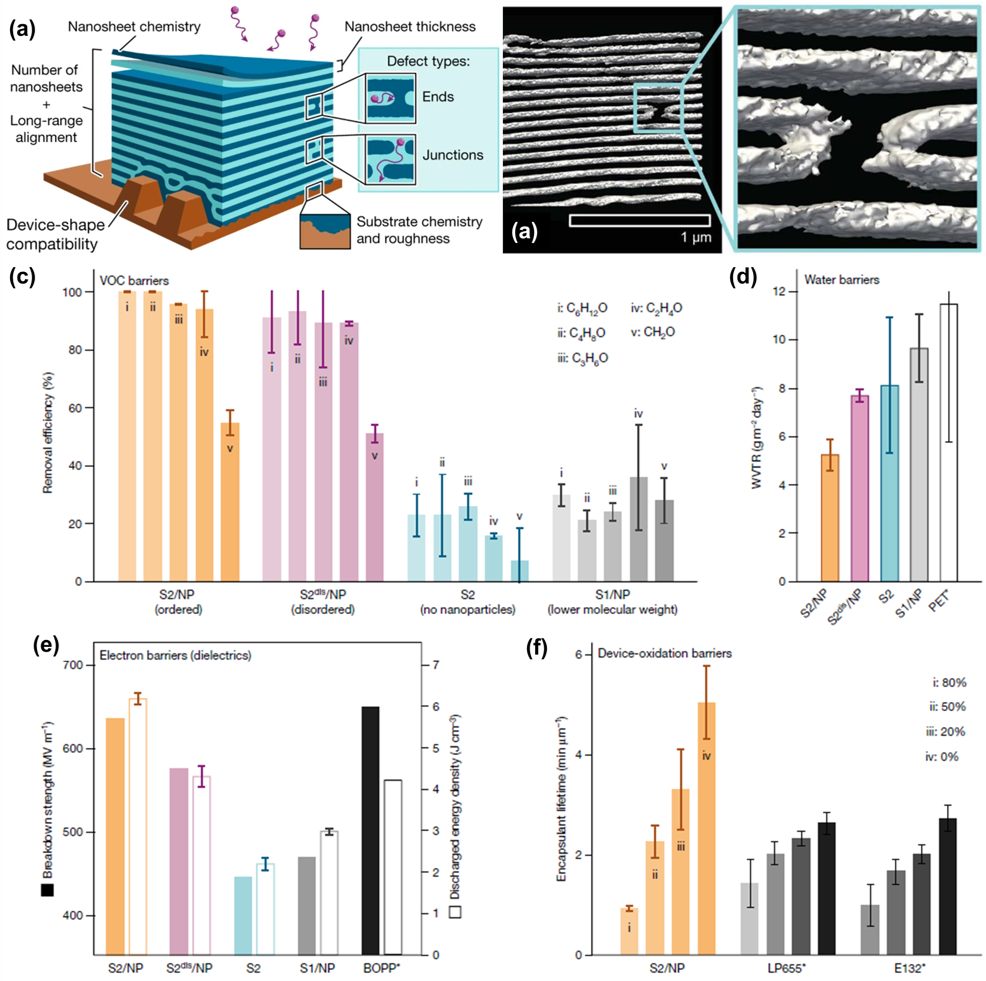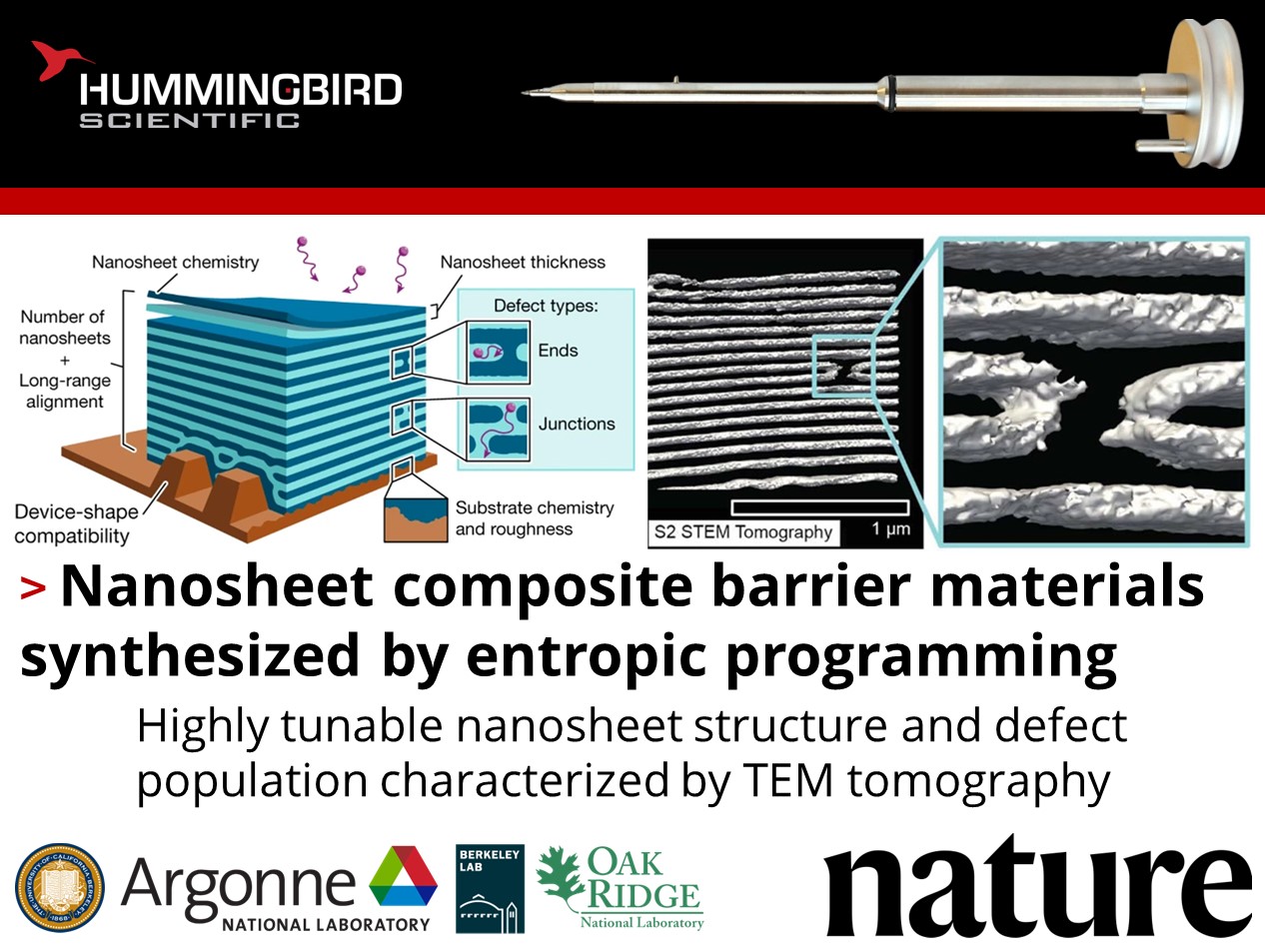How can targeted growth conditions improve performance of nanosheet barrier materials?
Emma Vargo, Ting Xu, and their colleagues at the University of California- Berkeley, Argonne National Laboratory, Berkeley Lab, and Oak Ridge National Laboratory published work using the Hummingbird Scientific tomography sample holder to perform 3D electron tomography on their nanolayered ternary composites of block-copolymer-based supramolecules, small molecules and ZrO2 nanoparticles intended as barrier coatings.

a) Schematic of nanosheet assembly. b) Tomographic reconstruction of S2 thick ordered nanosheets without nanoparticles, showing folded U-turn defects. c) VOC barrier performance for coatings on porous Teflon membranes. d) WVTRs of PET films with composite coatings. e) Dielectric breakdown strength (solid bars) and maximum discharged energy density (open bars) for composite coatings. f) Encapsulant lifetimes of S2/NP and two commercial UV-cured epoxies as device-oxidation barriers. Copyright © 2023 Springer Nature Limited
The team compared the morphology and barrier performance of nanosheets programmed using sequential nano-to-macro growth and programmed entropy-driven growth wherein the system mobility is matched to the targeted feature size. The nanostructure forms an organizing microframework of molecular aggregates while mobility is high, while the nanoparticles fill in the microframework while mobility is low, resulting in low defect density (0.056 μm−2) and ~98% efficiency in defect control. Performance testing indicated improved removal efficiency for volatile organic compounds (VOC), water vapor transmission rate (WVTR), dielectric breakdown strength and maximum discharged energy density, and device-oxidation barrier lifetime in the targeted thick nanosheet system with long-range order. Tomographic reconstruction was used to confirm continuity of U-turn defects in nanosheets. The new approach to nanosheet growth programming will improve design pathways for high-performance barrier materials with targeted feature sizes.
Reference: Emma Vargo, Le Ma, He Li, Qingteng Zhang, Junpyo Kwon, Katherine M. Evans, Xiaochen Tang, Victoria L. Tovmasyan, Jasmine Jan, Ana C. Arias, Hugo Destaillats, Ivan Kuzmenko, Jan Ilavsky, Wei-Ren Chen, William Heller, Robert O. Ritchie, Yi Liu, & Ting Xu, Nature 623 724-731 (2023) DOI: 10.1038/s41586-023-06660-x
Full paper Copyright © 2023 Springer Nature Limited
View All News

